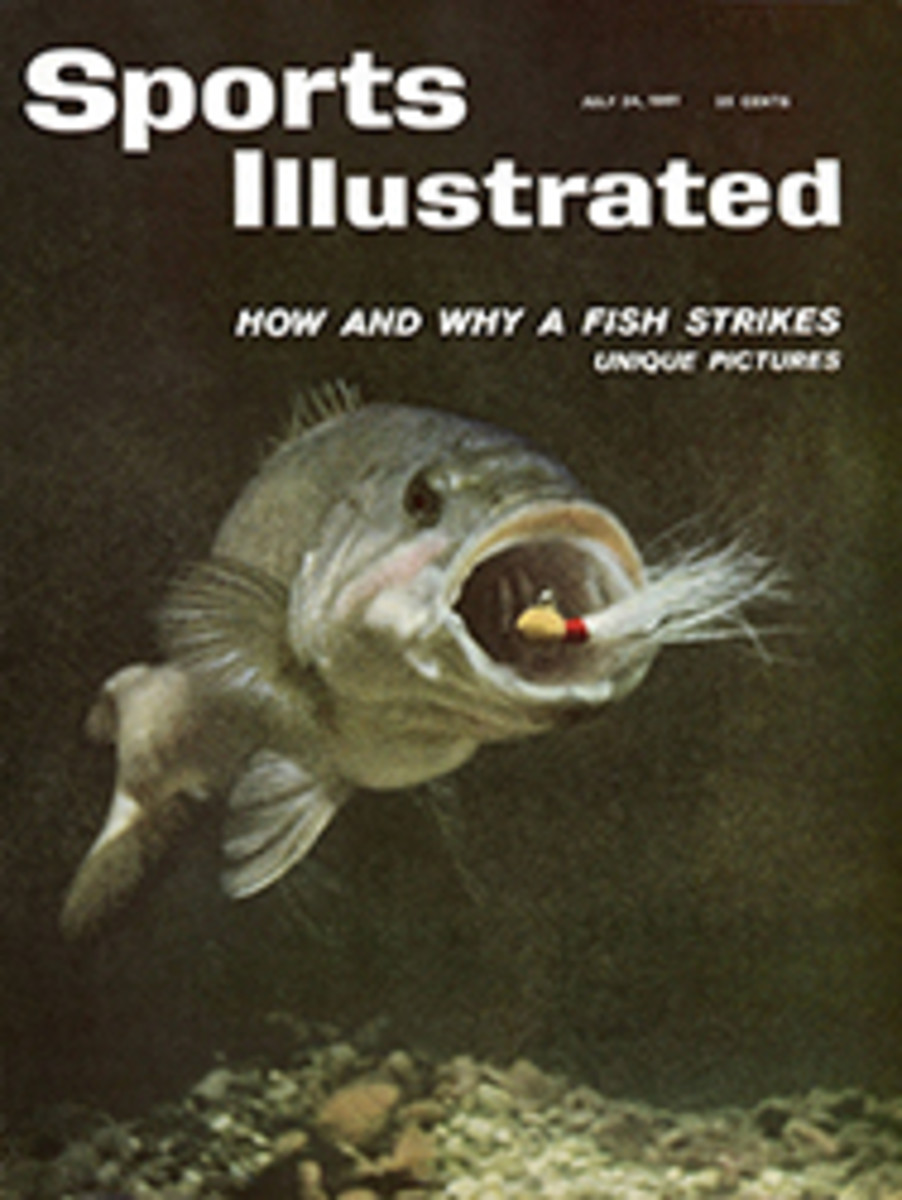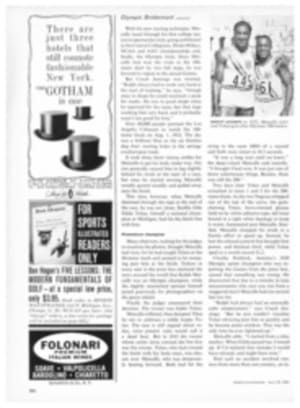
Dark glasses for every kind of bright day
Gathered here in the noonday glare of a beach is a small selection of the thousands of kinds of sunglasses on sale in America. They vary in color, in shape and in the materials from which they are made because they are designed for specific uses beyond the obvious one of shading the eyes of sun worshipers on the beach. There are today sunglasses designed to protect the skier from the glare of snow and the stinging wind and the motorist from the dangerous blaze of sun on chrome or pavement. There are glasses that improve the hunter's visibility in the fog-shrouded duckblind, and others that help the fisherman penetrate the reflections from the water.
Sunglasses of one strange sort or another were in use before optics was a well-organized science. Cleopatra shielded her eyes with emeralds. The Chinese of Marco Polo's day wore quartz lenses set in frames of bamboo. Eskimos today still use carved ivory shields with narrow slits to cut down the painful brilliance from glare ice.
Neither Cleopatra's emeralds nor ivory shields protected the assaulted retina very well—a good squint does as well. It is the invisible ultraviolet and infra-red on the edges of the spectrum, as much as the visible rays, that provoke headaches, fatigue and, in extreme cases, damage to the eye.
Sunglasses that would not only reduce glare but also absorb harmful ultraviolet and infra-red rays were developed more than half a century ago. However, excluding Hollywood's affection for dark glasses as a symbol of mystery and glamour, the practical use of protective glasses came only in World War II, when millions of Americans went to work on the water and under the high sun of the tropics.
Bausch and Lomb and the American Optical Company, two of the manufacturers who produced for the military 20 years ago, still make most of the quality glasses sold in optical shops. The 29¢ item available on the boardwalk today—made of plastic or blown glass—cuts the glare but absorbs little ultraviolet or infra-red. The ground and polished crown glass of an ophthalmic lens by Bausch and Lomb or American Optical does what the doctor ordered, filtering out 20% to 80% of the invisible rays.
Of the various new colors and types of lenses developed by Bausch and Lomb and AO, their Ray-Ban and Calobar greens have remained the bestsellers, but such haze-cutting browns as AO's Cosmetan and grays like AO's True Color and Bausch and Lomb's G-15 are increasing in popularity. (The grays, naturally, retain the true colors of a scene slightly better than other tints.) Yellow or amber lenses are used by hunters, sailors and skiers to cut through fog and haze. Contrary to some notions, they should never be worn at night to reduce the glare of oncoming cars—nor should any dark glasses, for in cutting the glare they also reduce total vision to the danger point and make it difficult to distinguish the colors of traffic signals.
Polaroid, a plastic material that redirects light rays in one direction and therefore cuts reflected glare from water particularly well, is now being laminated between two layers of Calobar green, Cosmetan and True Color gray by AO, making a fine glass for sailors, fishermen and beachcombers. Gradient-density lenses (like a Buick's windshield) give good protection from strong overhead light. Heat-treated impact-resistant glass has recently been perfected, and Lugene, a New York firm, has used this glass in a fine new skiers' spectacle ($22), which is colored a dense gray for screening the more intense ultraviolet and infra-red rays of high altitudes. Wrap-around glasses are the latest design. Wrap-arounds cannot be prescription-ground, but despite this one drawback they are a particular boon to drivers and skiers, affording unobstructed lateral vision while deflecting wind as well as bounced light. One wraparound type by H. L. Purdy is shown in the photograph at the left. From France come the first good plastic glasses made (shown in the drawing). The streamlined goggles are the glasses of the year for the Fast Set on ski slopes and race tracks. These new designs have an added cosmetic advantage: they are small enough to leave only a tiny area of white in a suntan. In green, yellow and brown, with gold-filled frames, they are $17.50 (Orma); in green only, with nickel frames, they're $13 (Rolley).
Today's sunglasses are meant for year-round wear. Here (reading from left, front to rear) is a diverse and useful selection: American Optical's bestseller, the green Calobar lens ($15, Clairmont Nichols); the yellow Haze-Master lens which cuts fog, sharpens detail ($18, Lugene); slim specs with green Ray-Ban lens, Bausch & Lomb's bestseller ($15, Lugene); smoke-brown wraparound glasses, good for driving ($15, Purdy); a clear plastic lens for protection from wind ($13.50, E. B. Meyrowitz): a lighter shade of Ray-Ban in a small green frame ($15, Lugene); Calobar lens with new graduated radiant-density coating ($22, Lugene); shooting glasses with yellow Kalichrome lens ($21.50, Clairmont Nichols) and, for blue-eyed blondes, blue lenses—they don't filter rays, they're just flattering ($18, Lugene).
PHOTO
RICHARD JEFFERY
ILLUSTRATION
NEWEST GLASS IS WRAP-AROUND PLASTIC

